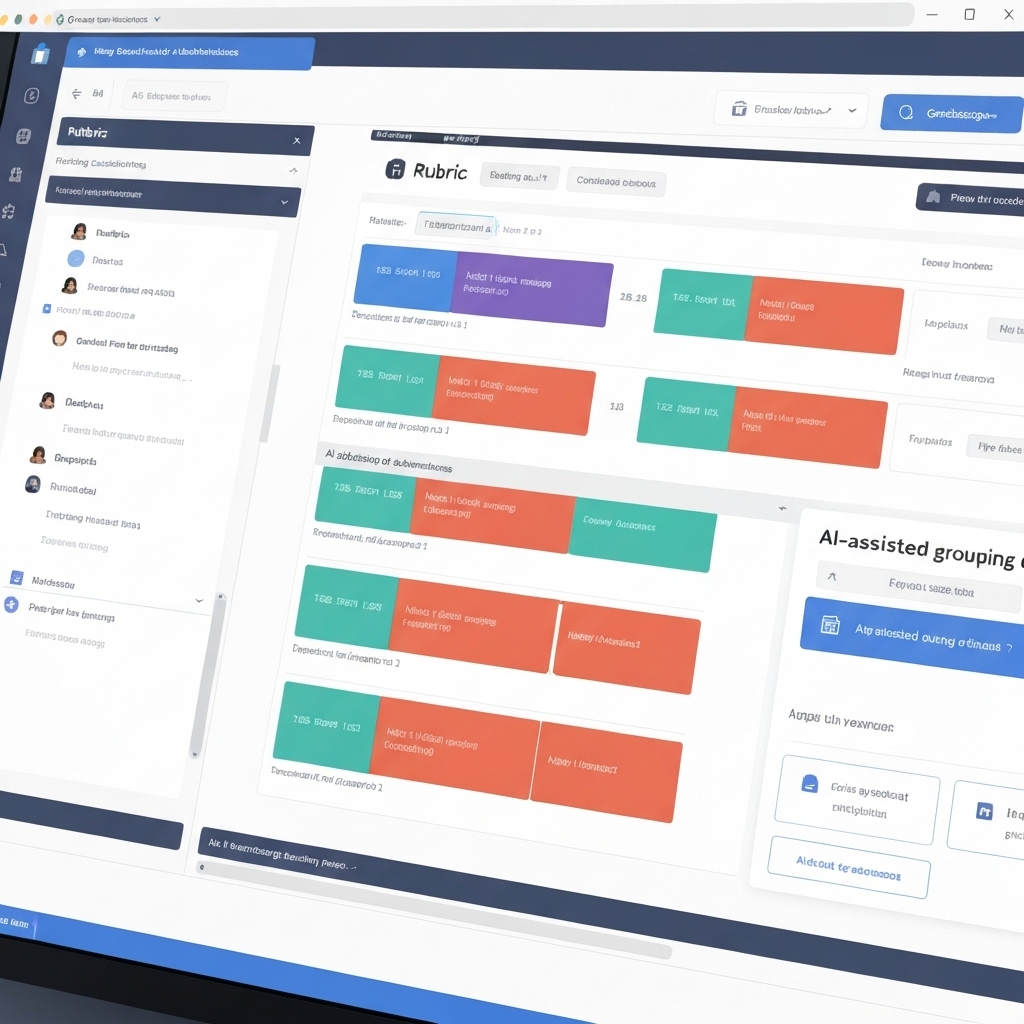Best AI Tools for Teachers and Education: Enhancing Learning in the Digital Age
Best AI Tools for Teachers and Education: Enhancing Learning in the Digital Age
Artificial intelligence is no longer a futuristic concept—it's actively reshaping education by giving teachers powerful tools to meet diverse student needs. AI-powered platforms like Khan Academy leverage adaptive learning algorithms to tailor content to individual student performance, ensuring that learners receive the right level of challenge and support. These intelligent systems analyze how students interact with material in real time, adjusting lesson paths to reinforce understanding and prevent knowledge gaps from widening. As a result, educators can focus more on mentorship and critical thinking development, while AI handles personalized instruction at scale.
Beyond personalization, AI is streamlining time-consuming administrative tasks that often take teachers away from actual instruction. Tools such as Gradescope use machine learning to assist in grading assignments and exams, significantly reducing turnaround time while maintaining accuracy. Automated attendance tracking, scheduling, and even feedback generation free up valuable hours in a teacher’s week, allowing them to invest more energy into crafting engaging lessons and building meaningful relationships with students. This shift not only improves efficiency but also helps reduce burnout among educators.
Student engagement is another area where AI is making a measurable impact. Platforms like Classcraft integrate gamification with AI-driven insights to create immersive learning experiences that respond dynamically to student behavior and progress. By identifying patterns in participation and performance, these tools enable teachers to intervene early when a student shows signs of disengagement. With timely, data-informed support, students are more likely to stay motivated and achieve academic success.
As AI continues to evolve, its role in education will expand beyond convenience to become a cornerstone of equitable and effective teaching. When thoughtfully integrated, these tools don’t replace teachers—they empower them. By embracing AI, educators gain access to real-time insights, customized resources, and automated workflows that make personalized education a reality for every student. The future of learning isn’t just digital; it’s intelligent, responsive, and centered on human potential amplified by technology.
Khanmigo: AI Tutoring and Lesson Support
Khanmigo, developed by the trusted educational platform Khan Academy, is transforming the way teachers and students interact in the learning process. By leveraging advanced AI technology, Khanmigo acts as a personalized teaching assistant that supports educators in crafting dynamic lesson plans and engaging discussion prompts tailored to their curriculum. This tool not only saves valuable preparation time but also enhances classroom instruction by integrating thoughtful, inquiry-based learning strategies. Educators can focus more on facilitation and less on content creation, knowing that Khanmigo provides a strong pedagogical foundation.
For students, Khanmigo offers one-on-one tutoring that emulates the Socratic method—asking guiding questions rather than providing direct answers. This approach encourages learners to think critically, build problem-solving skills, and develop a deeper understanding of the material. Whether working through math problems or exploring complex reading passages, students are prompted to reason through each step, fostering independence and confidence in their abilities. Research has shown that inquiry-based learning improves retention and engagement, making Khanmigo a powerful ally in modern education (Khan Academy).
Unlike traditional AI tutors that simply deliver answers, Khanmigo is designed to promote active learning by challenging students to arrive at solutions themselves. This emphasis on guided discovery aligns with best practices in cognitive science and educational psychology, supporting long-term academic growth. Teachers report that students using Khanmigo demonstrate improved reasoning skills and greater participation in classroom discussions.
By combining the expertise of Khan Academy with cutting-edge artificial intelligence, Khanmigo sets a new standard for educational support tools. It bridges the gap between individualized instruction and scalable technology, making high-quality, adaptive learning accessible to more students. Schools across the U.S. have already begun piloting Khanmigo with promising results, highlighting its potential to reshape the future of teaching and learning (Khan Academy Blog).

ChatGPT: Versatile Content Creation Assistant
ChatGPT is transforming the way educators approach lesson planning and classroom instruction by offering a powerful, time-saving solution for creating tailored educational content. From generating ready-to-use quizzes to crafting engaging writing prompts, teachers are leveraging this AI tool to streamline their workflow while maintaining academic rigor. With well-structured prompts, educators can produce differentiated materials that meet the needs of diverse learners, ensuring that students at various skill levels remain challenged and supported. This adaptability makes ChatGPT an invaluable asset across subject areas, whether in math, language arts, or social studies.
Beyond content creation, ChatGPT helps teachers design comprehensive syllabi and reusable feedback templates that promote consistency and clarity in assessment. By automating routine tasks, instructors gain more time to focus on student interaction and personalized instruction. According to Edutopia, many educators are already integrating AI tools like ChatGPT to enhance equity and accessibility in their classrooms. When used thoughtfully, these technologies support inclusive teaching practices by providing multiple means of engagement and expression.
The key to maximizing ChatGPT’s potential lies in effective prompting—clear, specific instructions yield the most accurate and useful results. Teachers who invest time in learning prompt engineering techniques can generate higher-quality materials that align with curriculum standards and learning objectives. Resources from trusted organizations such as Common Sense Education offer practical strategies for responsibly incorporating AI into teaching practices without compromising academic integrity.
As AI continues to evolve, its role in education is poised to expand, making it essential for educators to stay informed and proactive. ChatGPT is not a replacement for teacher expertise, but rather a collaborative tool that amplifies their impact. By embracing this technology with intention and ethical awareness, teachers can save valuable preparation time while delivering richer, more responsive learning experiences for all students.
Gradescope: Smarter Assessments and Grading
Gradescope leverages artificial intelligence to transform how educators assess student work, making grading faster and more consistent across both paper-based and digital assignments. By digitizing the evaluation process, it enables instructors to focus on providing meaningful feedback rather than getting bogged down by administrative tasks. The platform’s AI groups similar student responses together, allowing teachers to review and grade multiple answers simultaneously, significantly reducing the time required for assessment. This innovative approach is particularly beneficial in large-enrollment courses where consistency and efficiency are critical.
One of Gradescope’s standout features is its rubric-based grading system, which ensures fairness and transparency in evaluation. Instructors can create detailed rubrics tailored to specific assignments, and the platform applies them uniformly across all submissions. This is especially valuable in STEM disciplines, where problem-solving methods can vary but still lead to correct answers. By standardizing feedback, Gradescope helps minimize grading bias and enhances inter-rater reliability among teaching assistants. Institutions like UC Berkeley have adopted the tool to improve grading accuracy in high-volume courses.
Beyond efficiency, Gradescope provides actionable insights into student performance through analytics that highlight common misconceptions and learning gaps. Educators can use this data to adjust their teaching strategies in real time, fostering a more responsive learning environment. The platform seamlessly integrates with learning management systems like Canvas and Moodle, making adoption straightforward for schools and universities. For more information on how AI is reshaping education, visit Edutopia, a trusted resource for evidence-based teaching practices.

Diffit: Differentiation Made Simple
Diffit empowers educators to meet the diverse needs of their students by transforming any topic or standard into differentiated reading materials in seconds. Whether teaching science, social studies, or language arts, teachers can input a subject and instantly generate leveled texts that cater to varying reading abilities within the same classroom. This adaptability supports inclusive instruction, ensuring that struggling readers, English language learners, and advanced students all engage with content at an appropriate level. By removing the time-consuming task of creating multiple versions manually, Diffit enables teachers to focus on instruction and student support.
Beyond text leveling, Diffit enhances accessibility through built-in language supports such as simplified vocabulary, sentence structure adjustments, and key term definitions. These features are especially beneficial for English language learners and students with learning differences, helping bridge comprehension gaps without compromising curriculum goals. Educators can also generate activities like multiple-choice questions, open-ended prompts, and vocabulary exercises tailored to each reading level, reinforcing understanding across modalities. Tools like these align with Universal Design for Learning (UDL) principles, promoting equitable access to knowledge for all learners.
The platform’s efficiency and flexibility make it a valuable asset in today’s diverse classrooms, where personalized learning is increasingly essential. With just one click, teachers can produce scaffolded resources that maintain academic rigor while meeting individual student needs. According to research from the Council for Learning Disabilities, differentiated instruction significantly improves engagement and outcomes for students with varying abilities. By streamlining this process, Diffit not only saves time but also strengthens instructional effectiveness.
As schools continue to prioritize equity and inclusion, tools like Diffit play a crucial role in helping educators implement responsive teaching strategies. Its ability to quickly generate leveled content ensures that no student is left behind due to reading challenges or language barriers. For more information on differentiated instruction best practices, educators can explore resources from the National Education Association, which advocates for student-centered approaches that honor individual learning paths. With Diffit, personalized learning becomes not just an ideal, but an achievable reality.

Conclusion: Embracing AI for Educational Excellence
AI tools are transforming classrooms by streamlining time-consuming tasks, allowing educators to focus more on instruction and student interaction. From automating grading to generating personalized lesson plans, artificial intelligence is helping teachers reclaim valuable hours in their schedules. According to a report by Edutopia, AI-powered platforms can analyze student performance in real time, enabling timely interventions that support diverse learning needs.
Beyond administrative relief, AI fosters personalized learning experiences tailored to individual student pacing and styles. Adaptive learning systems like Khan Academy’s AI tutor use machine learning to adjust content difficulty based on student responses, ensuring no learner is left behind. Research from NWEA highlights how such customization improves academic outcomes, especially for students who struggle with traditional teaching methods.
Student engagement is also on the rise as AI introduces interactive elements such as chatbots, virtual tutors, and gamified content. These tools create a responsive learning environment where students receive instant feedback and encouragement. As noted by Common Sense Education, AI-driven interactions can mimic one-on-one tutoring, increasing motivation and participation across grade levels.
To remain effective and equitable, the integration of AI in education must be guided by thoughtful policies and professional development. When implemented with intention, AI becomes more than a technological upgrade—it becomes a catalyst for inclusive, dynamic classrooms ready to meet the demands of the future. The shift isn’t about replacing teachers; it’s about empowering them with tools that enhance both teaching and learning experiences.
